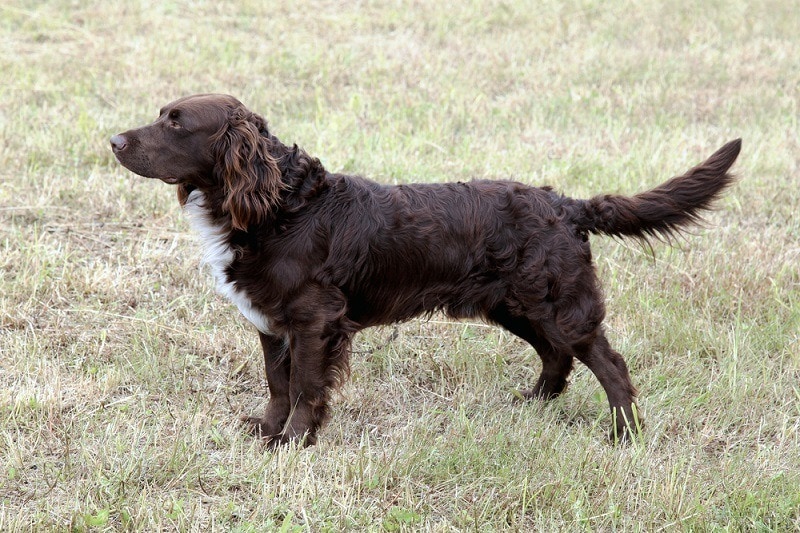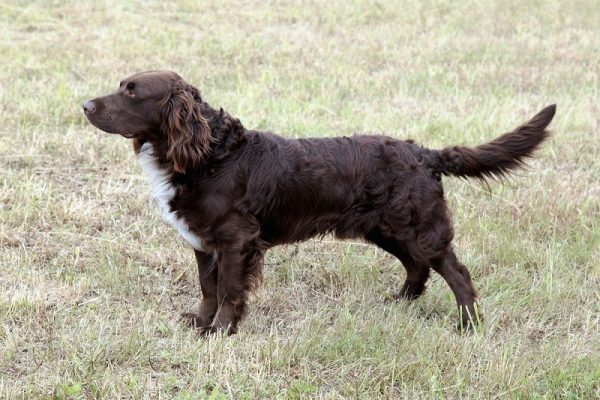Click Below to Skip Ahead
The German Spaniel, also known in their native Germany as the Deutscher Wachtelhund or German Quail Dog, has historically been used as a versatile and capable hunting dog. The breed is not well known outside of German hunting circles but is slowly gaining popularity around the world. These powerful hunting dogs are not commonly kept as pets due to their high prey drive, but they are highly popular among professional hunters and often used as capable gun dogs.
Breed Overview
Height:
18-21 inches
Weight:
40-55 pounds
Lifespan:
12 to 14 years
Colors:
White, fawn, brown, liver, grey, red
Suitable for:
Hunting, families, singles
Temperament:
Intelligent, lively, friendly, versatile, courageous, outgoing
They are highly adaptable dogs that get along well with both strangers and other dogs, although they can be a bit boisterous and overwhelming around young children. They are not well suited to novice owners due to their high-energy, potent prey drive, and somewhat stubborn character. However, as a gun dog and hunting companion, they are extremely loyal, capable, and versatile, making them one of the most popular choices in Germany.
While these dogs are known for their tracking and hunting prowess, they are gradually gaining popularity as a loyal companion dog too. If you are interested to know more about this lively breed, read on below for an in-depth look at the German Spaniel.
German Spaniel Puppies
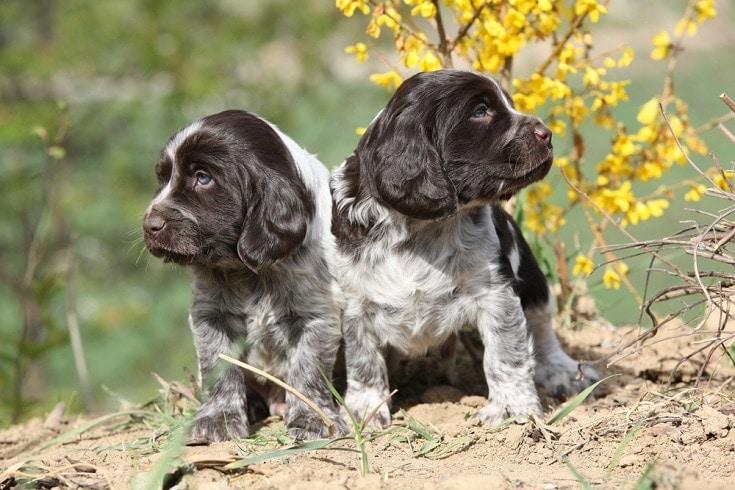
Before bringing home a German Spaniel puppy, you need to carefully consider the fact that these dogs were bred almost exclusively for hunting, and as such, they have high energy and stamina and a powerful prey drive. If these are traits that you are specifically looking for, though, the German Spaniel is an ideal choice.
German Spaniels are medium-sized, muscular, and sturdy dogs with long, thick, wavy coats. They have characteristically long ears and short legs, and their solid build allows them to sniff out and retrieve game like foxes and hares in the cold climates of Germany.
Bear in mind that bringing home a dog with such high energy and high exercise needs is a big responsibility that should not be taken lightly, and they will require a large chunk of time and attention every day. That being said, they are friendly, obedient, and loving dogs that are a great choice for hunters, lovers of the outdoors, and active owners.
Temperament & Intelligence of the German Spaniel
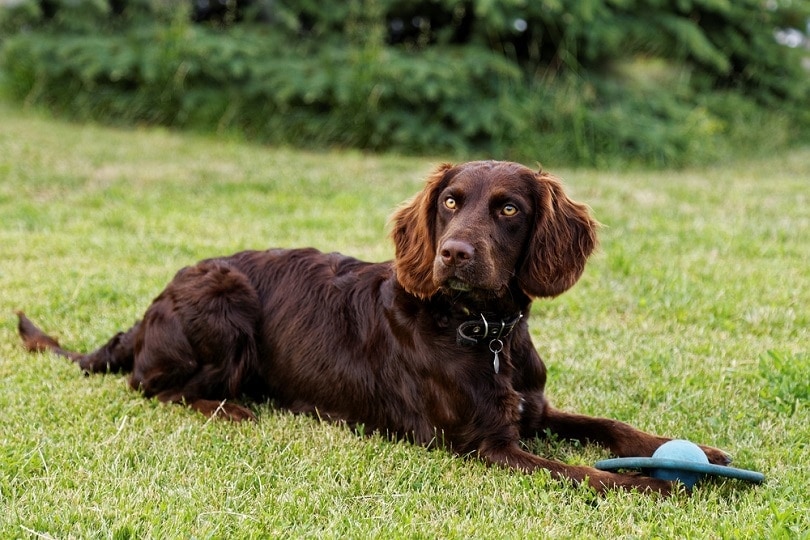
The German Spaniel is a lively, athletic, and energetic hunting dog that is happiest when put to work outdoors with their owners. They are notably friendly toward humans and other dogs and are highly adaptable to new environments. They are highly intelligent dogs that are quick to learn and are one of the most courageous of the Spaniel breeds.
While are not as specialized as other Spaniel breeds, they are capable hunters for owners who need a dog that can fulfill multiple hunting roles, such as tracking, retrieving, and sniffing. For this reason, they are always alert and always ready and willing to get out and work. This “always-on” eagerness is what makes the breed difficult to keep purely as a companion dog.
That being said, the German Spaniel has a docile temperament toward strangers and is rarely aggressive. Because they are so alert, they are rarely scared or frightened by sudden movements or sounds, making them trustworthy around small children.
Are These Dogs Good for Families?
German Spaniels are rarely kept as pets, so there is not much information about their character when in a family home. That being said, these dogs are widely known as friendly and gentle with their owners and strangers alike and are rarely aggressive. They are generally gentle and friendly with children too, although their high energy and sometimes boisterous nature may be too much for smaller children.
Does This Breed Get Along with Other Pets?
These dogs have a powerful hunting instinct and prey drive that is difficult to keep in check. While German Spaniels are known to be non-aggressive and are highly friendly toward other dogs, small pets and cats will surely be seen as prey. Even with early socialization and proper training, it will be a real challenge to keep this breed’s strong prey drive at bay.
Things to Know When Owning a German Spaniel
Food & Diet Requirements
German Spaniels are a highly active and energetic breed that needs a diet that complements their fast-paced lifestyle. Dry kibble that is high in animal-based protein is a convenient option because it has all the vitamins, minerals, and nutrients that your dog needs to live a healthy life — provided that it is of high quality. That said, we highly recommend supplementing their dry food with lean meats and organ meats for the beneficial amino acids and variety that meat will add to their diet.
We recommend against free feeding these dogs, as they are highly food motivated and can quickly become overweight. Instead, feed them two or three separate meals every day to keep them satiated. Also, avoid foods that contain filler ingredients like wheat, corn, and soy, as these are empty calories that will not provide adequate nutrition and will instead require your dog to eat more and thus gain unnecessary weight.
About 2-3 cups of good quality dry kibble a day are great, and remember to make sure that clean, fresh water is always available.
Exercise
The German Spaniel is a highly active breed with a long history of hunting and running long distances through tough terrain, and consequently, they will need a great deal of exercise. Even when used exclusively for hunting, they will need vigorous exercise on days off to keep them happy and healthy.
If you are keeping a German Spaniel strictly as a companion animal, you’ll need to take them for walks, runs, and jogs several times a day to keep them well exercised. Playtime in a well-fenced yard is also essential to keep them mentally stimulated and is a great way to bond with your pooch too. We highly recommend agility classes and obedience training to keep your German Spaniel both mentally and physically stimulated.
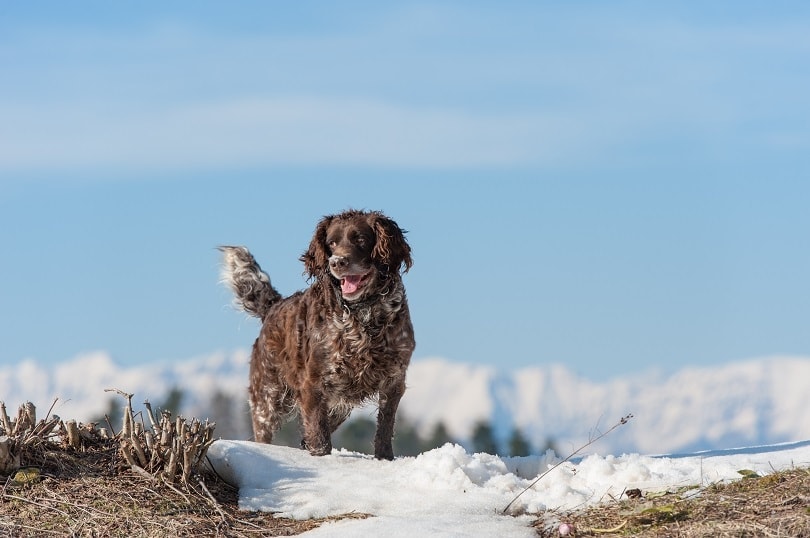
Training
Good training is essential when owning a German Spaniel, and due to the stubborn nature of the breed, this can be a challenge. While they are easy to train for the activities that they were bred for, like hunting, retrieving, and tracking, they can be a challenge in a suburban setting. These dogs will often run from their owner’s side out in the field but will quickly come back when called.
Obedience training is essential with this breed, and when they run off after any small animals that catch their eye, you’ll want them to come back as quickly as possible. Early socialization will help greatly with this, and you should begin socialization and basic training as early as possible. Basic commands like “sit” and “stay” can easily be integrated into daily life, such as during feeding time and walk time.
We recommend positive reinforcement training for this breed, as they don’t respond well to harsh training methods. The basis of this form of training — rewarding good behavior and ignoring or distracting from bad behavior — will work well with German Spaniels, as they are highly food motivated and eager to please.
Grooming ✂️
The German Spaniel does not require intensive grooming, although they do tend to shed heavily twice a year, in the spring and autumn. Brushing once a week should be sufficient, along with an occasional bath with clean water: Shampoos can disrupt the natural oils on your dog’s coat. Spaniels have long ears that need regular checks and must be kept clean and dry to prevent infection.
They have fast-growing nails that will need regular trimming to avoid splitting and cracking, and their teeth need weekly brushing to avoid dental disease.
Health and Conditions
In general, the German Spaniel is a healthy breed with relatively few genetic health concerns, and breeders have done a great job of keeping these dogs free from any serious inherited issues. That said, there are a few conditions that you’ll need to keep an eye out for, including:
- Elbow and hip dysplasia. Characterized by an inherited deformity of the elbow joint and hip joints, this disorder is fairly rare among German Spaniels and has been largely prevented by good breeding. The condition is easily managed by a healthy diet with plenty of healthy oils and early detection to prevent further breeding.
- Patellar luxation. This inherited disorder is characterized by the kneecap slipping out from the leg joint, causing pain, and it may eventually lead to arthritis.
- Epilepsy. Like some other Spaniel breeds, German Spaniels can sometimes be prone to epilepsy, which is characterized by intermittent seizures that can vary widely in severity.
- Obesity
- Bloat
- Skin allergies
- Cancer
- Hip and elbow dysplasia
- Patellar luxation
- Epilepsy
Male vs Female
If you have decided that the energetic German Spaniel is the breed for you, you’ll need to decide whether a male or female is the right choice.
In terms of temperament, there is little difference between male and female German Spaniels. Un-spayed females are known to be moody and slightly more independent and are generally more amenable to being left alone than males. Males are said to be slightly harder to train and more affectionate than females. Males are slightly larger than females, albeit only slightly: they are usually an inch or two taller and 4-5 pounds heavier.
Remember that all dogs are unique individuals, and most differences in temperament are largely anecdotal. Your dog’s temperament will be dictated more by their training and upbringing rather than their sex.
3 Little-Known Facts About the German Spaniel
1. They are rare outside Germany
Outside of their native Germany, the German Spaniel in exceedingly rare, although they are slowly gaining popularity in Sweden due to the growing wild boar population. They are used in Sweden to track and stop wild boar so hunters have a chance to sneak in and kill the boar. In the early 1970s, several German Spaniels were imported into the U.S. but were only bred a couple of times and only produced around 17 dogs. No German Spaniels were registered in the U.S., and the descendants of these few imports are now used to track and hunt black bears. Since then, more have been imported and bred, and there are thought to be around 150 dogs in Northern America.
In Germany, only hunters and gamekeepers are permitted to own a German Spaniel, and they are seldom sold to the general public.
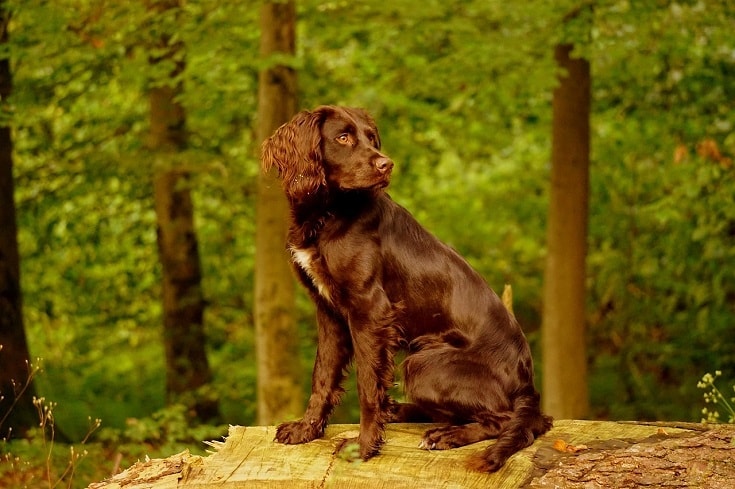
2. They were developed from the now extinct “Stoeberer”
The German Spaniel was developed by a German dog breeder named Frederick Roberth, who is largely credited with creating the breed in the late 1800s. Several breeds are thought to have been used in the creation of the German Spaniel but most prominently, was the now extinct “Stoeberer.” Evidence of this dog is found as far back as the early 1700s, and they were thought to have a sense of smell comparable to the Bloodhound.
3. They are rarely kept solely as pets
The German Pointer is bred exclusively for hunting and is barely known outside of hunting circles. Due to their high energy and powerful hunting drive — which many owners claim is impossible to stop — these dogs have only recently started becoming companion animals.
Final Thoughts
The German Spaniel is a rare breed outside of Germany, and rarer still as a companion animal. They have almost always been used as hunting dogs but are slowly becoming popular as family animals. These dogs are highly energetic with a powerful prey drive and are a real challenge for novice dog owners. As working and hunting dogs, they are highly capable, adaptable, and alert and are favored for their versatility in the field.
If you are an avid hunter or outdoor enthusiast, the energetic German Spaniel is an excellent choice, provided that you are one of the lucky few who can find one.
- Related Read: Yorkinese (Yorkie & Pekingese Mix)
Featured Image Credit: amajsen, Shutterstock

